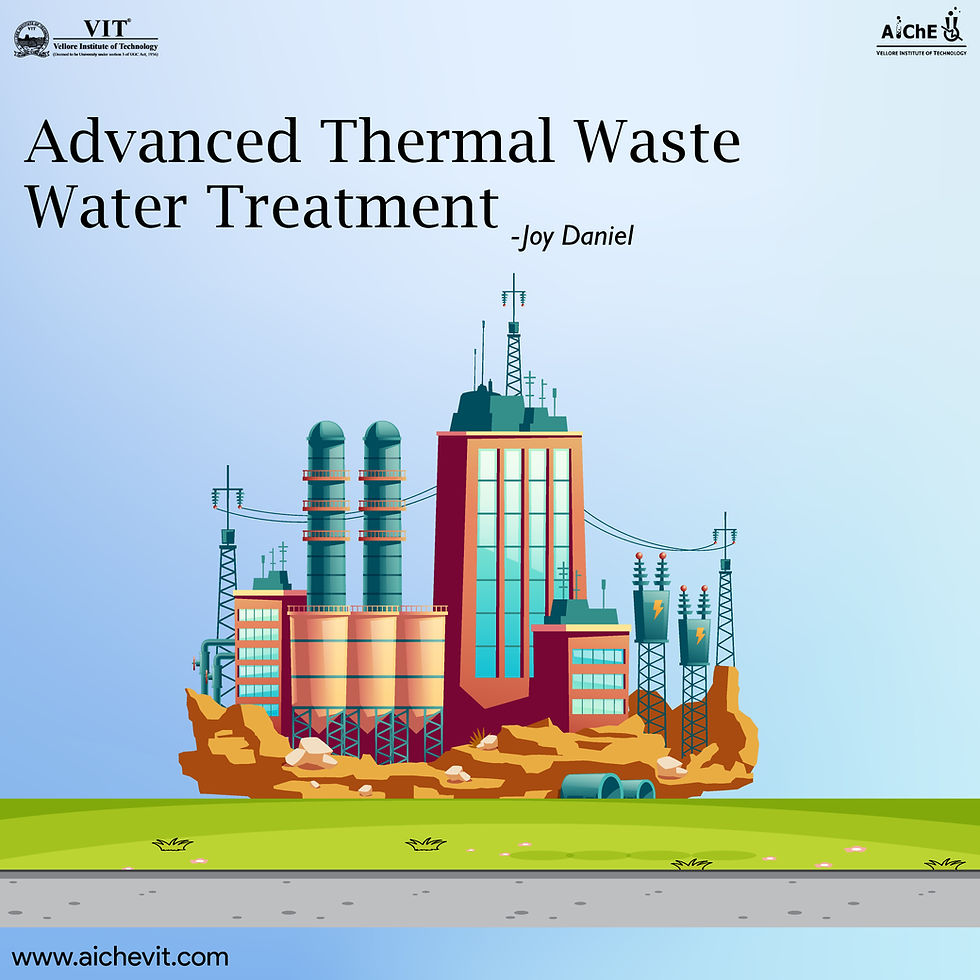Nuclear Energy as a clean and sustainable source of energy
- AIChE-VIT

- Jul 20, 2021
- 3 min read

Since time immemorial, the world has been undergoing constant change in the fields of science, technology, media, fashion, culture, and much more. Each change brings with it a set of positives and negatives. For things like energy exploitation and consumption, the visible changes could be seen via trends in the usage and depletion of available resources. Some of the conventional energy resources such as coal, gas, and oil are very helpful for the improvement of a country, both economically and for its residents. However, owing to the bad impact of these resources on the environment, a considerable amount of effort has gone into looking at alternative sources of energy, i.e, renewable energy resources. When we think about renewable sources of energy, the first things that pop into our minds are solar or wind energy. But how many of us think about nuclear energy? Nuclear energy is often left out despite being the second-largest source of low-carbon electricity in the world. Researches across the world have shown how efficient nuclear energy can be considering its capacity to provide clean and sustainable energy.
The first nuclear reactor to produce electricity was located near Arco, Idaho. The Experimental Breeder Reactor began powering itself in 1951. The first nuclear power plant designed to provide energy to a community was established in Obninsk, Russia, in 1954. Nuclear energy is a zero-emission clean energy source. It produces energy by nuclear fission, which is the process of separating uranium atoms to produce energy. The mechanism for the production of energy via nuclear fission is as follows. The heat generated by nuclear fission warms the reactor’s cooling agent. The cooling agent is usually water, but some nuclear reactors use liquid metal or molten salt. The cooling agent, heated by nuclear fission produces steam. The steam then twists the turbine that drives the generators, which in turn produces electricity. The added advantage is that, unlike fossil fuels, this does not release any harmful byproducts like carbon dioxide, carbon monoxide, sulfur dioxide, etc. Therefore, we understand that nuclear energy protects the air. It keeps the air clean by not contributing thousands of tons of harmful pollutants each year which leads to acid rain, smoke, lung cancer, and heart disease.
In addition to producing a large amount of carbon-free energy, nuclear energy produces more electricity than any other clean air source. The average nuclear power plant requires more than one square foot to operate. Nuclear Energy Institute says that wind farms require 360 times more land area to produce the same amount of electricity and solar photovoltaic plants require 75 times more space. In other words, you will need more than 3 million solar panels to produce the same power as a standard commercial reactor or more than 430 wind turbines. Nuclear energy is much more economically feasible and requires way lesser land space than other clean energy sources
Talking about wastage obtained, nuclear fuel produced is extremely dense and causes minimal wastage. The steam that empowers turbines and generators is eventually reused. It cools down on a separate building called a cooling tower. The steam condenses into the water and can be reused to produce more electricity. Most steam is reconstituted into the air, where it is less harmful than pure water vapor.
Overall nuclear energy produces electricity that can be used to power homes, schools, businesses, hospitals, and so much more. Looking at the current rate of depletion of fossil fuels, it should be of no surprise to anyone that new, cleaner sources of energy will be turned to pretty soon. For the same, using nuclear energy as a source could help revolutionize the quantity and quality of energy that we can consume.





Nice work and written so coherently
Very informative!!!
Hats off to the author. Commendable research work as well!
Amazing article!!
This is so well written! Makes us think about which outweighs the other, the pros or the cons.